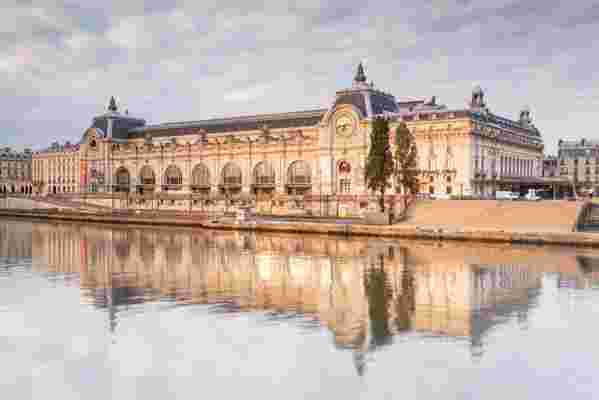Since 1986, the Beaux Arts Gare d’Orsay train station in Paris has been home to the Musée d’Orsay, where millions of visitors have perused the museum’s international artworks , including the world’s largest Impressionist collection, in its barrel-vaulted hall. Since it was reconfigured then by Italian architect Gae Aulenti and French ACT Architecture, the historic adaptive reuse project has remained mostly the same. But with a recent €20 million ($22.6M) gift from an anonymous philanthropist through the nonprofit American Friends of Musée d’Orsay, the museum announced an ambitious plan for redesign: Its historic building will be rededicated entirely to public space, converting administrative offices on the fourth floor into galleries and an education and research center. The project, which will work within the museum’s current footprint and is known as “Orsay Wide Open,” will be completed in two phases by 2026.

The exterior of the Musée d’Orsay.
“Orsay Wide Open will allow us to achieve a core objective of the museum: to offer visitors a comfortable experience in spacious galleries and with educational resources that enrich their understanding of our collection and the history of art and culture,” museum president Laurence des Cars said in a statement. As the museum’s collection has grown and annual visitor attendance has increased—to a record 3.6 million people last year—it became clear to decision-makers that the existing space was not being utilized in the most efficient way. With architect Agathe Boucleinville, the museum’s architectural and museography department director, at the helm of the project, the 13,000 square feet of administration space currently housed in the former rooms of the original hotel built within the 19th-century station will be converted into a new wing of Impressionist and Post-Impressionist galleries, opening the entire building to the public for the first time since it has been a museum. The move will allow the museum to show more of its collection, which focuses on mid-19th-to-20th-century artworks. Boucleinville also plans to reorganize the museum’s fourth floor as a 7,000-square-foot education center that will use digital technology to provide lessons about art to children, families, and school groups. Food and beverage centers, shops, and areas for relaxation and reflection will be dispersed throughout the new spaces. “The new wing is part of a global endeavor to reorganize and rethink the presentation of the collection, in an airier and more pleasant display,” says Boucleinville, whose goal is to create a visitor experience that is “richer and more accessible to all audiences, with special attention to catering for the young public.”
The ultimate resource for design industry professionals, brought to you by the editors of Architectural Digest

About a five-minute walk away along the River Seine, a new International Research and Resource Center will be built within a 17th-century building that the Musée d’Orsay acquired in 2018. Though design details for the Center have not yet been released (its future home is currently under architectural study to determine a sensitive restoration and refurbishment plan), the museum plans to consolidate its archives and library here, providing an integrated advanced study experience for independent scholars and international university collaborators. The education and research centers are planned to open in 2024 and the new gallery wing in 2026, and museum operations will continue as usual during construction. Though the recent donation will lead, the museum is still seeking private funding to ensure that the project is possible.
